We prioritize every detail, ensuring seamless travel experiences with personalized touches and exceptional service throughout.
Annually Certified by the Ministry of Natural Resources and Tourism
Welcome to Shiri Adventures’ Complete Guide to Safaris! As we look forward to 2024, we’re here to share all you need to know about Tanzania’s breathtaking beauty. Whether you’re a seasoned traveler or planning your first safari, our guide offers expert tips to help you choose the perfect adventure.
Tanzania, Africa’s safari gem, is a wildlife enthusiast’s paradise, featuring iconic locations like the majestic Ngorongoro Crater and vast Serengeti National Park. Home to the legendary Big Five, along with giraffes, hippos, caracals, and African wild dogs, the country showcases a wealth of wildlife. On a Tanzanian safari, you’re not just observing; you’re part of the scene, witnessing animals roam freely in their natural habitat. As dusk falls, relax in comfortable lodges, serenaded by the sounds of the savannah. From the Serengeti’s dry plains to Ngorongoro’s lush forests, Tanzania promises an unforgettable and diverse wildlife adventure!
A glimpse of a Safari Experience | Shiri Adventures
Imagine being in a safari vehicle with a pop-up roof, providing 360-degree views of Tanzania’s stunning scenery and wildlife. After a day of adventure, relax at a lodge or camp, ready to explore more the next day. A Tanzanian safari is also a cultural journey—visit Maasai villages and historic sites like Olduvai Gorge. For a unique experience, try a walking safari or soar above the savannah in a hot air balloon. Shiri Adventures offers these exclusive experiences, making your safari unforgettable.
From the iconic Serengeti plains to the ancient Ngorongoro Crater, Tanzania provides a unique safari experience. Encounter the legendary Big Five—lions, elephants, buffaloes, leopards, and rhinos—in their natural habitats. You’ll also see a variety of other fascinating wildlife species.
Lion Pride On a Tanzanian Safari | Shiri Adevntures
In Tanzania, the allure of spotting the ‘Big Five’—lions, leopards, buffaloes, rhinos, and elephants—attracts many safari-goers. While rhinos are rare in East Africa, they can still be seen, especially in the Ngorongoro Crater. The other Big Five animals are abundant, providing thrilling encounters for wildlife enthusiasts on Tanzanian safaris

Visa Requirement:
Most travelers visiting Tanzania need a visa. The visa allows entry into Tanzania for tourism, business, or other purposes.
Application Process:
Online Application:
Travelers can apply for a Tanzanian visa online through the official Tanzania Immigration website. This is recommended to avoid long queues upon arrival. Here is the link to apply online: Tanzania Immigration Website
Visa on Arrival:
Alternatively, visas can be obtained upon arrival at the airports and land borders in Tanzania. However, this may involve waiting in line, and it’s advisable to have the exact cash amount ready in US dollars.
Required Documents:
Visa Types:
Processing Time:
Note:
For the most current and detailed information on visa requirements, application procedures, and fees, please visit the Tanzania Immigration website.

During your Tanzania safari adventure, you’ll enjoy game drives of 5-8 hours daily, with options for walking safaris and leisure days at lodges. Shiri Adventures provides modern custom Land Cruisers from 2016 to 2023, equipped with Wi-Fi, fridges, comfortable seating, and charging stations. We prioritize vehicle maintenance for optimal performance and reliability throughout your journey across Tanzania’s national parks. Experience unparalleled comfort with Shiri Adventures’ safari vehicles, enhancing every moment of your wildlife expedition!
Experience the wonders of Tanzania with our expert safari guides at Shiri Adventures. They enhance your wildlife encounters with intriguing facts—like why zebras rest their heads together or how elephants signal alarm. Our guides also serve as cultural liaisons, facilitating meaningful interactions with local communities, such as the Maasai. Selected for their exceptional wildlife knowledge and driving skills, our driver-guides ensure you visit Tanzania’s most iconic national parks Adventures, we prioritize excellence, attracting top talent through competitive salaries and comprehensive benefits.
Discover Tanzania safaris with Shiri Adventures through our curated camps and lodges. Beyond exciting wildlife encounters with zebras and elephants, our lodges offer serene retreats in the savannah. Each lodge is handpicked for its luxury, attentive staff, and diverse cuisine. We ensure every lodge meets our high standards for comfort. Strategically located in the Serengeti, near Ngorongoro Crater, or by Lake Manyara, these lodges offer breathtaking views, immersing you in the heart of the savannah
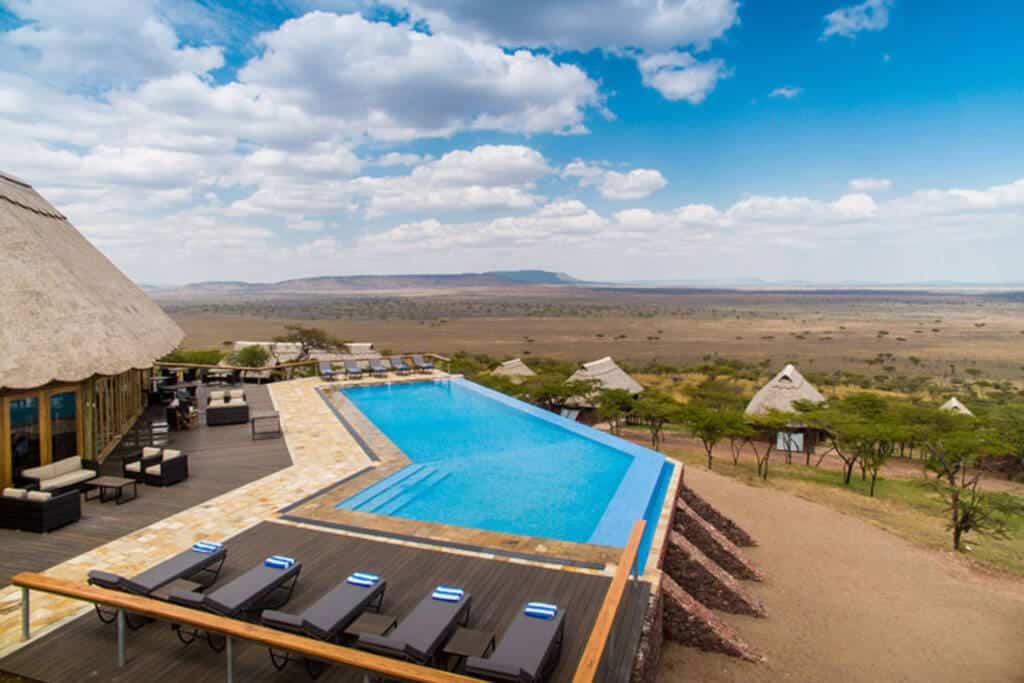

A luxury Tanzania safari offers an exquisite twist on the classic adventure. These safaris feature exceptional lodges, akin to Europe’s finest hotels, known for their impeccable service and gourmet dining. Indulge in a culinary journey with luxury gourmet foods from Europe and beyond, complemented by top-notch local organic dishes. Enjoy high-end wines and champagnes, an array of gourmet cheeses, cured meats, and more.
The lodges boast spacious interiors elegantly furnished with handcrafted pieces, exuding opulence that attracts celebrities and discerning travellers alike.
Book Early for Peak Seasons
To secure your spot, especially during peak seasons from late December to early March and late June to mid-October, booking 3-4 months in advance is essential.
Premium Partnerships and Exclusive Transfers
We partner with prestigious hotel chains like Four Seasons, Singita, One Nature, and others to ensure a premium stay for our guests. Additionally, we provide tailored charter logistics between parks and lodges, including private jet transfers for an exclusive and seamless travel experience. This service is particularly advantageous during the peak season.
For the ultimate luxury Tanzania safari experience, book with us and enjoy unmatched elegance and comfort.
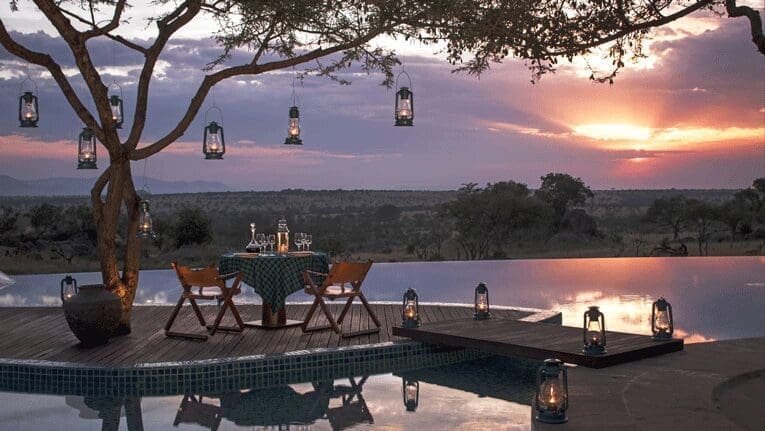
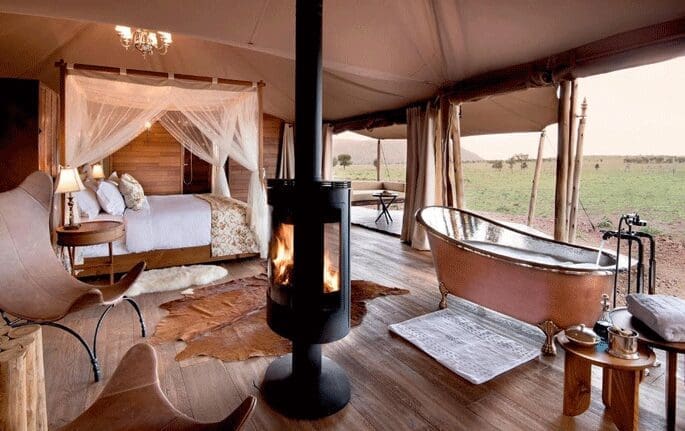
All luxury Tanzania safari lodges we work with offer amazing panoramic views, ensuring an unforgettable backdrop for your wilderness adventure.
All luxury Tanzania safari lodges we work with offer amazing panoramic views, ensuring an unforgettable backdrop for your wilderness adventure.
Hot Air Balloon Flights
A hot air balloon ride is a highlight of any luxury safari. Floating above Tanzania’s savannah offers a stunning view for spotting wildlife. Available in Tarangire and Serengeti, it’s one of Africa’s most unforgettable experiences. Many Shiri Adventures clients have enjoyed adding this air safari to their itineraries.

Bush Aviation
Air travel greatly streamlines safari itineraries. A flight can shorten the lengthy 8-9 hour drive from Arusha to the Serengeti to just 2 hours. This quick transition allows you to begin your wildlife adventure almost immediately after landing, maximizing your wildlife viewing time. Shiri Adventures can easily incorporate convenient flights into your safari itinerary, helping you make the most of your trip
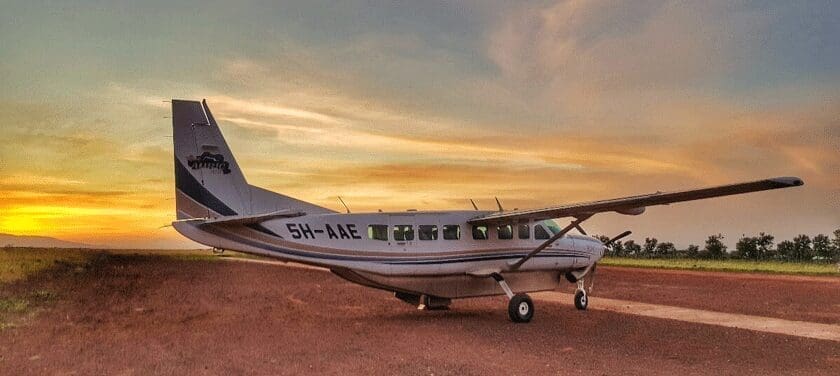
Serengeti National Park is renowned for its vast landscapes and rich wildlife. The Central Serengeti offers year-round wildlife viewing, while the Northern Serengeti features dramatic river crossings during the Great Migration in July and August. From January to February, the Southern Serengeti comes alive with thousands of wildebeest calving. The Western Serengeti, with its dense bush and forests, is perfect for wildlife photography. Each region provides unique and unforgettable safari experiences, making the Serengeti a must-visit for nature enthusiasts.
Tarangire National Park is an essential stop on any Tanzanian safari, renowned for its iconic baobab trees and abundant wildlife. Here, visitors can witness impressive prides of lions, large herds of elephants, and a variety of animals such as giraffes, zebras, wildebeests, hippos, and antelopes. Rare sightings of tree-climbing lions further add to the park’s allure, offering a truly unforgettable safari experience.
Lake Manyara National Park is renowned for the breathtaking sight of thousands of pink flamingos flocking along its shores annually. This park offers a diverse array of wildlife amidst a backdrop of the serene lake, distinguishing it uniquely among Tanzania’s national parks.
The Northern parks of Tanzania often steal the spotlight in safari itineraries. However, the Southern Tanzania circuit deserves attention. These lesser-known destinations provide unique experiences, especially for second-time visitors.
Ruaha National Park in Southern Tanzania is the country’s second-largest national park and home to Africa’s largest elephant population. This wildlife paradise teems with lions, leopards, cheetahs, giraffes, and various antelopes. For those seeking an off-the-beaten-path safari experience, Ruaha is an excellent choice.
Nyerere National Park, formerly known as Selous Game Reserve, is Tanzania’s largest national park, ideal for those seeking quieter safari trails. With its upgrade to national park status, all hunting has been prohibited, making Nyerere NP a fantastic destination for peacefully observing animals in their natural habitats.
Our 12-day safari package is the perfect blend of adventure, wildlife, and relaxation. Begin your journey in Arusha, then explore Tarangire, Serengeti, and Ngorongoro with expert guides. After the thrill of spotting the Big Five and witnessing Africa’s wild beauty, wind down with beach bliss in Zanzibar. The itinerary includes cultural visits, luxury lodges, and plenty of time for rest.
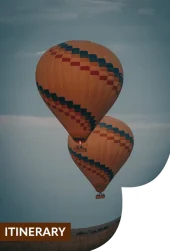
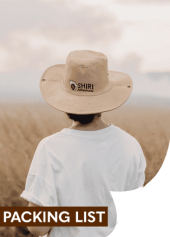
Not sure what to bring? Our free Safari Packing List includes essentials to help you travel smart and light.
A well-packed safari bag ensures you’re ready for anything — from early-morning game drives to sundowners in the bush. Essentials include neutral-toned clothing, a good camera, insect repellent, sun protection, and comfortable walking shoes. Layers are key as temperatures shift from cool mornings to warm afternoons. With our expert guide, you’ll pack smart and enjoy the wild in comfort.



TERMS AND CONDITIONS | AFRICAN SAFARI | PRIVACY POLICY | REFUND POLICY | FOR TRAVEL AGENCIES | HOTELS IN TANZANIA | OUR BLOG
© 2025 Shiri Adventures